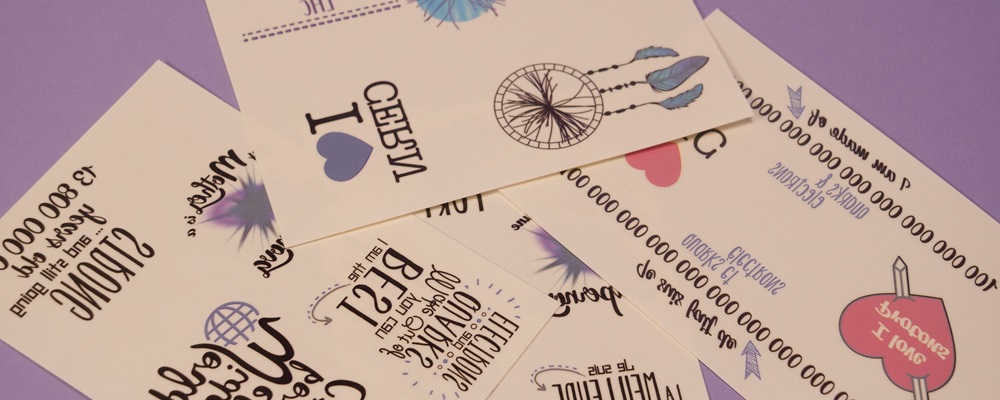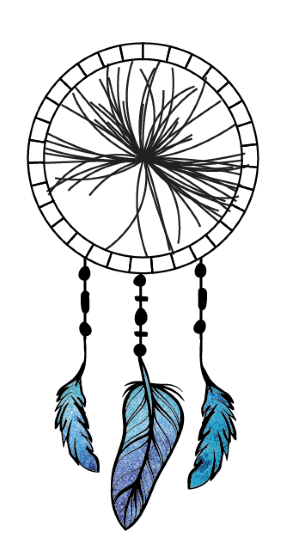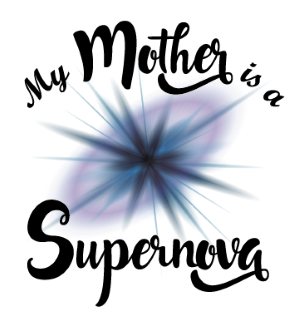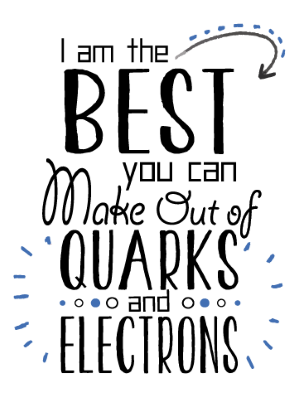
Express your love of particle physics with these temporary tattoos.
Here are explanations for some of them...
|
Ordinary matter is almost entirely made up of quarks and electrons. These particles are extremely small and it takes a huge number of them to make up a human being. The whole universe is considered to be made of 3.28 x 1080 particles. |
|
All the particles that you and I are made of were produced at the moment of the Big Bang, approximately 13.8 billion years ago. |
|
At CERN, the LHC (Large Hadron Collider) collides particles together at very high energies. This energy then spontaneously creates hundreds of new particles. The tracks left by these new particles are seen in huge particle detectors. (This tattoo is best placed around your wrist). |
|
This is an artist’s interpretation of an Indian dreamcatcher (a handmade willow hoop, on which a net or web is woven) and the particle tracks left in one of CERN’s detectors (see above). They don’t have much in common, even if the LHC detectors have made thousands of physicists’ dreams come true! |
|
Most of the atoms that make up our body, such as oxygen, carbon, hydrogen, nitrogen and calcium, were first produced in gigantic star explosions, known as supernovae. Therefore, not only your mother, but also your father and you yourself are all products of supernovae. |
|
Most ordinary matter is made up of quarks and electrons. With up and down quarks (gathered by gluons) you can make protons and neutrons, which themselves make up nuclei. Add electrons around the nuclei and you have an atom. All atoms are made of these three simple components, which then make up all of the ordinary matter in and around us. That's quite an impressive recipe with very few ingredients! |
|
Tim Berners-Lee, a British scientist working at CERN, invented the World Wide Web (WWW) in 1989. The web was originally conceived and developed to meet the demand for automatic information-sharing between scientists in universities and institutes around the world. |
2,5 CHF
Water applicable temporary tatoos.







